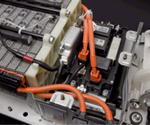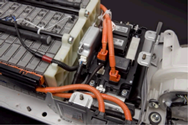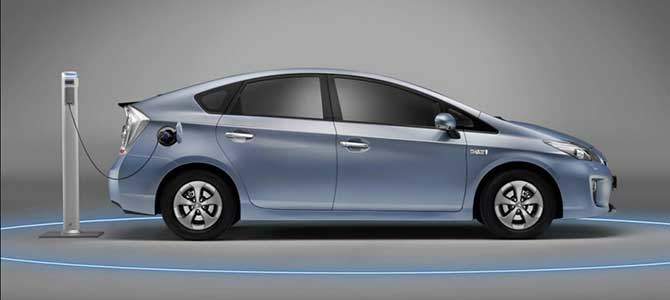Prius Hybrid Battery
In general Toyota Hybrid Prius Battery life is starting to weaken when the fuel economy deteriorates this is the first sign of Prius battery failure.All batteries wear out over time, but several factors effect when that happens first is battery chemistry, the second number of charge and discharge cycles, the third temperature extremes, even humidity. average Toyota Prius life is around 10-year,
 How do we rebuild Toyota Prius hybrid battery repair at Prius repair shop?
How do we rebuild Toyota Prius hybrid battery repair at Prius repair shop?
A) we test to see if the Hybrid battery computer is faulty. If it is still working perfectly you will have no error icons and messages after the Toyota Prius hybrid battery is reconditioned. We check if there is any additional error to make sure that the Prius hybrid battery will operate normally in every aspect. B) We strip out the Toyota Prius hybrid battery pack as seen in picture and discharge them individually. This is necessary for the Toyota Prius battery life.
C) We then charge the cells individually over on our special programmable on a preset charging regime, maintaining constant current and monitoring the temperature. This is necessary to remove cells that are faulty from the Toyota Prius hybrid battery pack, and to rebuild lost capacity in fixing the Prius hybrid battery repair. D) We use desulphators in the charging process to assist in the restoring of lost capacity. E) After charging Toyota Prius hybrid battery we test each cell for voltage attained and internal resistance to make sure the remaining Prius battery life F) We stress test each cell with 100 amps current in.This will ensure that each string will survive the load required by the electric motor.. G) All faulty cells are replaced. For the Toyota Hybrid battery repair we take the car or “Prius hybrid battery” for a test run to balanced and equalize all cells and to ensure that the Prius hybrid battery pack is performing normally.
H) We can now rebuilt tubes by spot welding good cells. This solves the problem of finding good tubes. With this we will be able to keep the series 1 Prius running for a very long time to come.Warranty Each Prius hybrid battery after reconditioning is tested in a Prius hybrid battery to ensure that it is operating correctly and that it will perform under,
The Module of Hybrid battery repair
Toyota Prius uses prismatic NiMH modules from Panasonic. Each module consists of six 1.2 V cells connected in series. The module has a nominal voltage of 7.2 V, capacity of 6.5 Ah, weighs 1.04 kg, and has dimensions of 19.6mm(W) x 106mm(H) x 275mm(L). Further notable features are as follows:
A thermal well on top of the cell allows measurement of an approximate internal temperature of the electrolyte,
A hydrogen vent provides for release of hydrogen through a manifold under gassing conditions,
Terminals on each side provide clean connections, – Tie down bolts secure the modules to structural supports,
A plastic case lowers mass, and – The side surfaces of the module provide air gaps for airflow created by dimples and protrusions when two modules are stacked. This Panasonic design has improved in specific energy and power capabilities over the first generation cylindrical cells that are in the 1997 – 1999 Japanese Prius hybrid battery repair.
The Pack of Hybrid battery repair
Toyota Prius Generation II battery stack consists of 28 prismatic NiMH modules connected in series. It delivers a nominal 201.6 Volts and has a 6.5 Ah capacity. The modules are stacked side by side and then compressed together in a rigid, non-expandable structure that prevents expansion from internal pressures. Prius hybrid battery repair, the complete batteryhybrid-battery-replacement-orange-county pack consists of the battery stack, enclosure for structural support and airflow, In Prius hybrid battery repair electronic control unit/monitor, relays and safety switch. The weight of the complete battery pack is 45 kg. The pack is horizontally positioned in the boot of the vehicle partially under the back seat. Power electronics Prius hybrid battery repair (inverter, DC-AC converter) are under the hood and a blower for moving air and associated air ducts are in the boot. Discharge power capability of the Prius hybrid battery pack is around 20 kW at 50% SOC with regenerative capability of 14.5 kW at 2C. The power capability increases with higher temperatures and decreases at lower temperatures in Prius hybrid battery repair. Active thermal management can improve power capability at lower temperatures.
The Toyota Prius Battery Pack Thermal Management
The purpose of a Prius hybrid battery thermal management system is to keep the batteries cells operating within a desirable temperature range; prevent the batteries from exceeding a high temperature limit that can damage the batteries and/or reduce life; and maintain battery temperature variations to low levels to prevent highly imbalanced batteries. Pack imbalances can reduce performance and can also damage the battery and/or reduce life. Thermal management of the battery pack is typically accomplished with the combination of two approaches. First, a cooling/heating system is designed to extract/supply heat to the Prius hybrid battery repair pack. Second, the battery controller adjusts the vehicle’s use of the battery pack based on the conditions in the batteries.
Forced Air System to increase Toyota Prius battery life
The Prius supplies conditioned air from the cabin as thermal management for cooling the Prius hybrid battery. The pack’s forced air system consists of two vents located in the cabin under the middle brake light (exhaust from the cabin or inlet to the pack); ducting to the Prius hybrid battery repair pack enclosure; the enclosure manifold; air gaps between modules; ducting out of the pack to a blower that pulls the air through the system; and two exhausts (one to the boot and the other to the outside). In Prius hybrid battery repair, A hydrogen vent from each module is connected in series with tubing. Any gases released are exhausted from the vehicle through the gas manifold to avoid any increased hydrogen concentration and, thus, potential for explosion. Outside air is conditioned (heated or cooled) by the vehicle’s thermal comfort system to a level comfortable for the driver. This approach has the advantage of providing air that is not only comfortable to the passenger(s), but also ideal for use in heating or cooling the NiMH batteries. However, the Prius hybrid battery does not use the forced air for heating the batteries. To achieve a relatively uniform temperature distribution across the modules, a parallel airflow scheme is used, rather than a series configuration. In a parallel configuration, each module is set up to receive the same amount of airflow and thus the same cooling. To achieve this in the Prius hybrid battery, cabin air enters the pack through a plenum that runs beneath the battery stack horizontally from passenger side to driver side. The cross-sectional area of the plenum is largest at its entrance and linearly decreases as it goes under the modules. Then the air flows vertically through the gaps between each module (formed from dimples and protrusions on side walls). Finally, the air enters into the top plenum. This plenum’s cross-section increases linearly in the direction of the flow. With this design, the pressure drop across each module is expected to be uniform and, consequently, should lead to a uniform flow rate around each module. The air is drawn by a 12 V blower installed above the driver’s side rear tire well. The air is either exhausted to the boot or through a vent on the driver’s side C-pillar. The fan has four settings, depending on the maximum temperature of four monitored batteries. Toyota also monitors the inlet and outlet air temperatures. The fan settings are off, low, medium, and high speed. The blower setting depended on temperature and transitions with hysteresis depending on whether temperature is increasing or decreasing,
Prius battery fan cleaning the Battery Pack ECU to increase Toyota Prius battery life
The Prius hybrid battery has a computers that’s solely dedicated to keeping the Prius battery at the optimum temperature and optimum charge level. Both these functions maintain and increase Toyota Prius battery life. Prius hybrid have lab data showing the Prius hybrid battery can do 180,000 miles (290,000km) of normal driving with absolutely no degradation of the battery’s performance.long Toyota Prius battery life is largely due to the computers control of the Battery pack.
Prius battery Life
in General the Prius battery wear out over time, but several conditions effect when that happens. the Prius battery chemistry the number of charge and discharge cycles, temperature humidity. You’ll notice two things when it’s time for a new Prius battery pack when Prius battery efficiency is low the Prius engine will run almost all the time under light load, and your fuel economy will drop off significantly.The first sign that the Toyota Prius battery pack is starting to weaken is when the fuel economy deteriorates. As the electric motor’s contribution Toyota Prius hybrid battery to power at speeds above E.V mode,
Prius Multinational display
The charge level of the the HV Prius battery is kept by the control software at a level between 40 percent and 80 percent. on the multi function Prius display of Toyota Prius there is an icon shows level of charge by color and also bar

Green is above normal the computer will limit the charging of the HV battery, also limit the regenerative energy production and even stop completely at maximum permitted level to charge. there will be possible, where as much energy as possible to be extracted from the battery pack serving the actuator Blue is within the normal all regenerative energy can be dissipated towards the HV battery and battery pack can not and must deliver maximum energy serving.
Pink is below the normal tapping energy from the HV battery to cover the drive become limited and completely stopped at the lowest permitted level. also engine will not turn off, but provide a charging current from the generator to the HV battery pack.
The process will be regulated on the basis of number of parameters, such as generated electric energy MG1, necessary energy saving the HV battery pack (charge level), temperature NIMH-cells and serving the requested electric power drive MG2

Telephone No.(949) 916-0769

